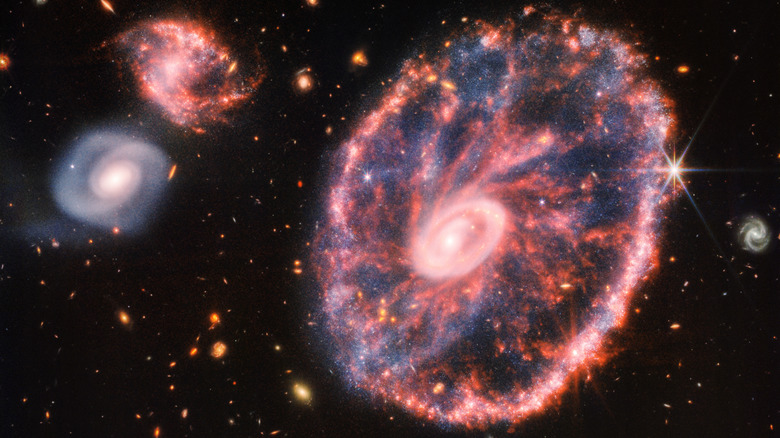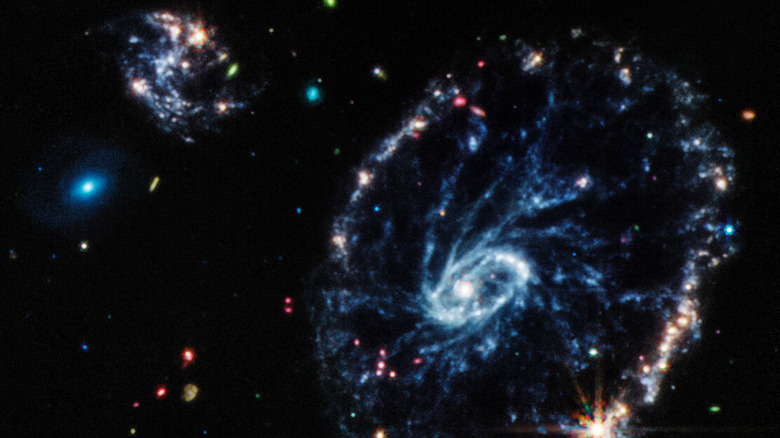What James Webb Has Learned About The Stunning Cartwheel Galaxy
With the flood of new data coming from the James Webb Space Telescope, we can all look forward to more breathtaking images of space objects, like a recently released image which shows the stunning Cartwheel Galaxy. Galaxies appear in many ways, from faint, distant ones which are visible only as fuzzy blobs to galaxies near to the Milky Way, in which you can see individual stars and study their compositions and ages. And when seen in detail, these galaxies can have a variety of shapes, from spiral galaxies — similar to our own galaxy — to elliptical galaxies, which are long and thin.
The Cartwheel Galaxy stands apart from the crowd, however, due to its distinctive wagon wheel-like shape. Named for its bright central region and many arms reaching out into shape, it was formed when two galaxies collided — one large spiral galaxy and another smaller galaxy, changing the structure of the final merged galaxy resulting from the collision (via ESA).
The galaxy is located around 500 million light-years away, and it used to be something of a mystery, because it was hard for astronomers to see through the large amounts of dust in the galaxy, which block visible light. But the instruments on the James Webb Space Telescope look in the infrared wavelength, which means they can peer through dust to see structures which would otherwise be hidden. This image is a composite of data taken using Webb's Near-Infrared Camera, or NIRCam, looking in the 0.6 to 5 micron range, and the Mid-Infrared Instrument, or MIRI, which looks in the 5 to 28 micron range.
Learning from the Cartwheel
Data from both instruments was necessary to build up a more complete picture of the galaxy. The NIRCam data, which appears as blue, orange, and yellow in the composite image, shows bright young stars in the outer ring of the galaxy especially well. Areas of blue show where new stars are being born (via ESA).
MIRI data can show composition of parts of the galaxy, like regions of hydrocarbons and silicate dust. The MIRI image also shows the "spokes" that radiate out from the central region of the galaxy.
The unusual structure of the galaxy can be seen more clearly in the MIRI image, where you can see both an inner ring close to the center and an outer ring around the galaxy's edges. These rings are created by the collision between the two original galaxies, which formed the current galaxy when shockwaves were sent out by the massive event. The structure means the galaxy is called a ring galaxy, one of the rarest types of galaxy.
The Cartwheel galaxy will continue to change and evolve over time as well. "Webb's observations underscore that the Cartwheel is in a very transitory stage," ESA scientists wrote. "The galaxy, which was presumably a normal spiral galaxy like the Milky Way before its collision, will continue to transform. While Webb gives us a snapshot of the current state of the Cartwheel, it also provides insight into what happened to this galaxy in the past and how it will evolve in the future."

